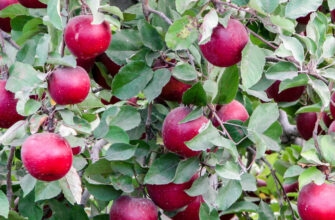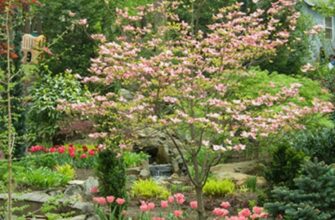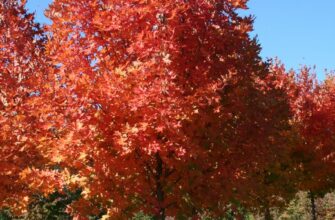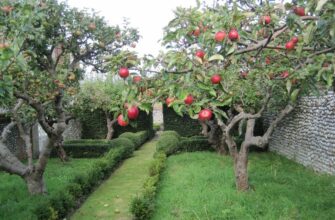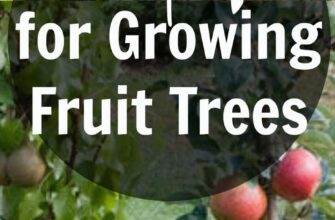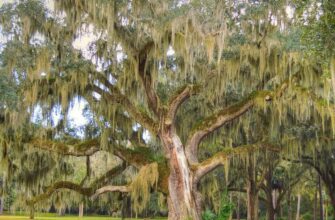- Discover the Best Shade Trees for 2023: Top 10 Varieties to Enhance Your Landscape
- Magnolia Trees
- Maple Trees
- Oak Trees
- Birch Trees
- Elm Trees
- Willow Trees
- Ash Trees
- Beech Trees
- Sycamore Trees
- Cedar Trees
- Why Shade Trees are Important
- How to Choose the Right Shade Tree
- Tips for Planting and Caring for Shade Trees
- Benefits of Shade Trees for the Environment
- Shade Trees for Different Climate Zones
Discover the Best Shade Trees for 2023: Top 10 Varieties to Enhance Your Landscape
When it comes to creating a cool and comfortable outdoor space, shade trees are an essential addition. Not only do they provide relief from the scorching sun, but they also add beauty and character to any landscape. In 2023, there are several shade trees that are gaining popularity for their impressive features and benefits.
One of the top choices for shade trees is the oak tree. Known for its strong and sturdy branches, the oak tree provides ample shade and creates a majestic presence in any yard. Another popular option is the sycamore tree, which boasts a wide canopy and beautiful peeling bark that adds visual interest.
If you’re looking for a shade tree with a graceful and delicate appearance, the birch tree is an excellent choice. Its slender branches and distinctive white bark create a stunning contrast against the green foliage. Similarly, the willow tree is known for its elegant weeping branches, which create a soothing and tranquil atmosphere.
For those seeking a shade tree with stunning flowers, the magnolia tree is a top contender. With its large, fragrant blooms in shades of white, pink, and purple, the magnolia tree adds a touch of beauty and elegance to any landscape. Another flowering shade tree to consider is the maple tree, which not only provides shade but also boasts vibrant foliage in shades of red, orange, and yellow.
If you’re looking for a shade tree that can withstand harsh conditions, the cedar tree is an excellent choice. Its durable wood and ability to resist rot and decay make it a popular option for creating shade in dry and arid climates. Lastly, the elm tree is a classic choice for shade, with its broad canopy and attractive arching branches.
Whether you’re looking for a shade tree with impressive size and strength, stunning flowers, or a graceful appearance, there are plenty of options to choose from in 2023. Consider planting one of these top 10 shade trees to create a cool and inviting outdoor space that you can enjoy for years to come.
Magnolia Trees
Magnolia trees are a beautiful addition to any landscape. With their large, showy flowers and glossy green leaves, they provide both shade and visual interest. Unlike oak or pine trees, which can be quite tall, magnolia trees are typically smaller and more compact. This makes them a great choice for smaller yards or gardens.
There are several different types of magnolia trees to choose from. The most common varieties include the Southern magnolia, the Saucer magnolia, and the Star magnolia. Each variety has its own unique characteristics and bloom times, so you can choose the one that best suits your needs.
Magnolia trees are known for their fragrant flowers, which come in a variety of colors including white, pink, and purple. These flowers attract butterflies and bees, making them a great choice for pollinator gardens. In addition to their flowers, magnolia trees also have attractive foliage. Their leaves are typically dark green and shiny, adding a touch of elegance to any landscape.
One of the benefits of planting magnolia trees is their ability to provide shade. While oak and pine trees may take years to reach their full height, magnolia trees grow relatively quickly. Within a few years, they can provide a good amount of shade for your outdoor space. This can help to keep your home cool in the summer and reduce your energy bills.
When it comes to caring for magnolia trees, they are relatively low-maintenance. They prefer well-drained soil and should be watered regularly, especially during dry periods. Magnolia trees also benefit from regular pruning to maintain their shape and remove any dead or damaged branches.
In conclusion, magnolia trees are a great choice for adding beauty and shade to your landscape. With their stunning flowers and attractive foliage, they are sure to be a standout feature in any garden. Whether you choose a Southern magnolia or a Saucer magnolia, you can’t go wrong with these elegant trees.
Maple Trees
Maple trees are a popular choice for shade trees due to their beautiful foliage and sturdy growth. They are known for their vibrant colors in the fall, with leaves ranging from bright red to golden yellow. Maple trees are also highly adaptable and can thrive in a variety of soil types and climates.
There are several different types of maple trees, each with its own unique characteristics. The elm maple, for example, is known for its large, broad leaves and graceful branches. The pine maple, on the other hand, has smaller, needle-like leaves and a more compact growth habit. The oak maple has a strong, sturdy trunk and branches, while the willow maple has long, drooping branches that create a weeping effect.
Cedar maple trees are known for their aromatic wood and dense foliage, making them a popular choice for privacy screens. The magnolia maple, with its large, showy flowers, adds a touch of elegance to any landscape. Sycamore maple trees have distinctive bark that peels away to reveal patches of white, creating a unique visual appeal.
One of the most well-known types of maple trees is the sugar maple. This tree is highly valued for its sap, which is used to make maple syrup. The sugar maple has a beautiful, dense crown and a straight trunk, making it a popular choice for landscaping. Other popular varieties of maple trees include the red maple, silver maple, and Japanese maple.
Whether you are looking for a shade tree, a tree with vibrant fall colors, or a tree with unique characteristics, maple trees are an excellent choice. With their adaptability, beauty, and versatility, maple trees are sure to enhance any landscape.
Oak Trees
Oak trees are some of the most majestic and iconic shade trees that you can plant in your garden. With their strong and sturdy trunks, they provide excellent shade and add a touch of elegance to any landscape. There are several types of oak trees to choose from, each with its own unique characteristics.
One popular type of oak tree is the cedar oak. This tree has beautiful foliage that turns a vibrant shade of red in the fall, creating a striking contrast against its dark brown bark. Another popular choice is the magnolia oak, which features large, glossy leaves and produces fragrant white flowers in the spring.
If you’re looking for a tree with a more graceful appearance, consider planting an elm oak. These trees have slender branches that create a delicate canopy, providing dappled shade underneath. Sycamore oaks, on the other hand, have broad, palmate leaves that provide dense shade and are perfect for creating a cool retreat on hot summer days.
For a more evergreen option, pine oaks are a great choice. These trees have needle-like leaves that stay green year-round, providing shade and privacy throughout the year. Willow oaks, on the other hand, have long, slender leaves that flutter in the breeze, creating a soothing sound and adding movement to your garden.
If you’re looking for a tree with beautiful bark, consider planting a birch oak. These trees have smooth, white bark that peels off in thin sheets, revealing a new layer of fresh bark underneath. This adds visual interest to your garden and makes the tree stand out.
No matter which type of oak tree you choose, you can’t go wrong. These trees are not only beautiful, but they also provide valuable shade and shelter for wildlife. So why not plant an oak tree in your garden and enjoy its beauty for years to come?
Birch Trees
Birch trees are a popular choice for shade trees due to their elegant appearance and ability to provide ample shade. They are known for their distinctive white bark, which adds visual interest to any landscape. Birch trees are also valued for their tolerance to various soil types and their ability to adapt to different climates.
One of the main advantages of birch trees as shade trees is their relatively fast growth rate. They can reach a height of 40 to 70 feet within a few decades, providing shade and shelter to the surrounding area. This makes them a great choice for homeowners who want to create a shaded outdoor space quickly.
Another reason why birch trees are highly regarded as shade trees is their ability to provide a dense canopy. The leaves of birch trees are small and numerous, creating a thick layer of foliage that effectively blocks sunlight. This helps to keep the area beneath the tree cool and shaded, making it an ideal spot for outdoor activities or relaxation.
In addition to their shade-providing qualities, birch trees also offer other benefits. They have shallow root systems, which means they are less likely to interfere with underground utilities or damage nearby structures. Birch trees also have a relatively low maintenance requirement, making them an easy choice for homeowners who want a beautiful and functional shade tree.
When it comes to choosing other shade trees, there are several options that complement birch trees well. Sycamore trees, with their large and broad leaves, provide additional shade and can create a stunning visual contrast with the slender trunks of birch trees. Magnolia trees, with their large, fragrant flowers, add beauty and fragrance to any landscape. Maple trees, oak trees, pine trees, cedar trees, and elm trees are also popular choices for shade trees, each with their own unique characteristics and benefits.
Elm Trees
Elm trees are a popular choice for shade trees due to their large, spreading canopies and attractive foliage. They are known for their graceful, arching branches and their ability to provide ample shade in the summer months. Elm trees are also highly adaptable and can thrive in a variety of soil types, making them a versatile option for many landscapes.
One of the most well-known varieties of elm trees is the American elm. This tree is native to North America and is prized for its elegant form and beautiful fall color. Another popular variety is the Chinese elm, which is known for its rapid growth and resistance to disease. The Siberian elm is another option, with its hardy nature and ability to tolerate harsh conditions.
Elm trees are often planted in parks, along streets, and in residential yards to provide shade and enhance the landscape. They can reach impressive heights, with some species growing up to 100 feet tall. The leaves of elm trees are typically oval-shaped and have a serrated edge, adding to their visual appeal.
In addition to their shade-providing qualities, elm trees also offer other benefits to the environment. They can help improve air quality by absorbing pollutants and producing oxygen. Elm trees also provide habitat and food for various wildlife, including birds and squirrels.
If you’re considering planting an elm tree, it’s important to choose a variety that is well-suited to your climate and soil conditions. Consulting with a local arborist or nursery can help you select the best elm tree for your specific needs. With proper care and maintenance, elm trees can be a long-lasting and beautiful addition to any landscape.
Willow Trees
The Willow tree is a beautiful and graceful addition to any landscape. Known for its long, slender branches and delicate leaves, the Willow provides a unique and soothing aesthetic. It is often planted near bodies of water, as it thrives in moist environments. The Willow tree is a popular choice for those looking to add shade to their garden or yard.
Compared to other shade trees such as maple, magnolia, oak, pine, sycamore, cedar, birch, and elm, the Willow tree offers a distinct charm. Its branches gently sway in the breeze, creating a calming and peaceful atmosphere. The Willow’s leaves are also a standout feature, with their vibrant green color and unique shape.
In addition to its aesthetic appeal, the Willow tree provides practical benefits as well. Its dense foliage provides excellent shade, making it a perfect choice for hot summer days. The Willow’s branches also offer privacy, creating a natural barrier between your property and the outside world.
When it comes to maintenance, the Willow tree is relatively low-maintenance compared to other shade trees. It is adaptable and can tolerate a variety of soil conditions, although it prefers moist and well-drained soil. Regular watering and occasional pruning are usually sufficient to keep the Willow healthy and thriving.
Overall, the Willow tree is a fantastic choice for those seeking a shade tree that combines beauty, functionality, and ease of care. Whether you are looking to create a peaceful retreat in your backyard or add a touch of elegance to your garden, the Willow tree is sure to impress.
Ash Trees
Ash trees are one of the top shade trees for 2023, along with maple, sycamore, cedar, pine, birch, willow, elm, and magnolia. These trees are known for their large, spreading canopies that provide ample shade in the summer months.
One of the reasons ash trees are popular shade trees is because of their fast growth rate. They can quickly reach heights of 40 to 50 feet, making them an excellent choice for homeowners who want to create a shaded area in their yard.
Ash trees also have attractive foliage, with leaves that turn a vibrant yellow or purple in the fall. This adds to their aesthetic appeal and makes them a beautiful addition to any landscape.
In addition to their shade-providing qualities, ash trees also have other benefits. They can help improve air quality by filtering pollutants and producing oxygen. They also provide habitat and food for birds and other wildlife.
When planting ash trees, it’s important to choose a suitable location. They prefer well-drained soil and full sun, although they can tolerate some shade. It’s also important to consider their size at maturity and give them enough space to grow.
In conclusion, ash trees are a top choice for shade trees in 2023. Along with maple, sycamore, cedar, pine, birch, willow, elm, and magnolia, they provide excellent shade and add beauty to any landscape. Consider planting an ash tree in your yard to enjoy its many benefits.
Beech Trees
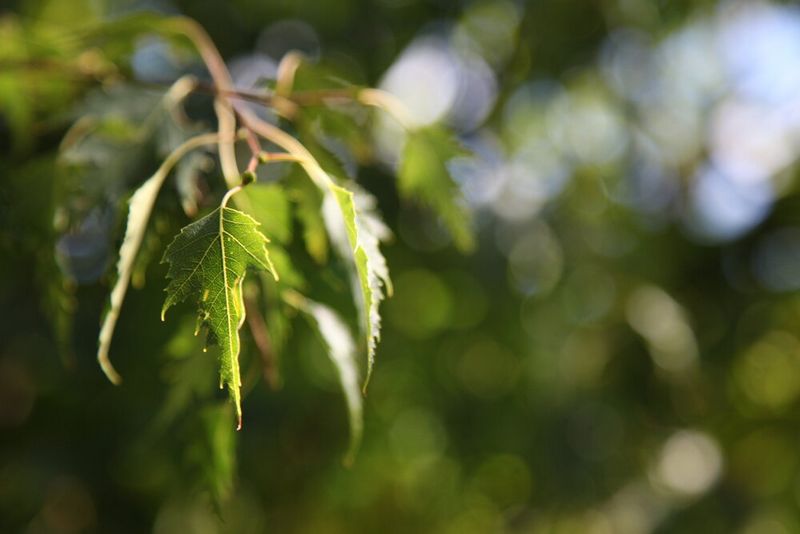
Beech trees are a popular choice for shade trees due to their dense foliage and beautiful appearance. They are known for their smooth, gray bark and their ability to provide ample shade during the hot summer months. Beech trees are also highly adaptable and can thrive in a variety of soil conditions, making them a versatile choice for any landscape.
One of the main advantages of beech trees is their ability to create a thick canopy that provides excellent shade. This makes them a great choice for areas where you want to create a cool, comfortable space to relax or entertain. Beech trees also have a unique leaf shape, with serrated edges and a glossy, dark green color. This adds visual interest to any landscape and can create a stunning backdrop for other plants and flowers.
In addition to their shade-providing qualities, beech trees are also highly resilient and can withstand harsh weather conditions. They are known for their durability and can withstand strong winds and heavy snowfall. This makes them an excellent choice for areas that experience extreme weather conditions.
When it comes to choosing shade trees, beech trees are often preferred over other options such as elm, pine, maple, willow, birch, sycamore, oak, and magnolia. While these trees also provide shade, beech trees offer a unique combination of beauty, resilience, and adaptability that sets them apart. Whether you’re looking to create a peaceful retreat in your backyard or add visual interest to your front yard, beech trees are an excellent choice.
Sycamore Trees
The sycamore tree, also known as the American plane tree, is a popular shade tree choice for many homeowners. Its distinctive mottled bark and large, broad leaves make it a visually striking addition to any landscape.
Sycamore trees are known for their fast growth rate, making them an excellent choice for those looking to quickly establish shade in their yard. They can reach heights of up to 100 feet, providing ample shade for outdoor activities and protection from the sun’s harmful rays.
In addition to their shade-providing abilities, sycamore trees also have a strong and durable wood. This makes them a popular choice for woodworking projects, such as furniture and flooring. The wood of the sycamore tree is often compared to other popular hardwoods, such as cedar and oak, for its strength and beauty.
Another benefit of sycamore trees is their ability to attract wildlife. The large leaves and dense canopy provide an ideal habitat for birds and other small animals. Sycamore trees are often found near bodies of water, as they have a high tolerance for wet soil conditions. This makes them a great choice for planting near ponds or streams.
In terms of maintenance, sycamore trees are relatively low-maintenance compared to other shade tree options. They are resistant to many common diseases and pests, such as the emerald ash borer. However, they can be susceptible to certain fungal diseases, such as anthracnose, so it is important to monitor the tree’s health and address any issues promptly.
In conclusion, sycamore trees are an excellent choice for homeowners looking to add shade and beauty to their landscape. With their fast growth rate, durable wood, and ability to attract wildlife, they offer a range of benefits for any outdoor space.
Cedar Trees
Cedar trees are a popular choice for shade trees due to their attractive appearance and ability to provide ample shade. They are known for their tall, straight trunks and dense foliage, making them ideal for creating a cool and shady environment.
One of the main advantages of cedar trees is their ability to adapt to various soil types and climates. They can thrive in both wet and dry conditions, making them suitable for a wide range of locations. Cedar trees are also known for their resistance to pests and diseases, making them a low-maintenance option for homeowners.
When it comes to shade, cedar trees are highly effective. Their dense foliage provides excellent coverage, blocking out sunlight and creating a cool and comfortable space underneath. This makes them a popular choice for parks, gardens, and residential areas where shade is desired.
In addition to their shade-providing qualities, cedar trees also offer aesthetic appeal. Their vibrant green leaves add a touch of beauty to any landscape, and their unique texture and shape make them a standout feature. Cedar trees can also be pruned and shaped to fit specific design preferences, allowing for customization and creativity.
Overall, cedar trees are a top choice for shade trees in 2023. Their adaptability, resistance to pests, and ability to provide ample shade make them an excellent option for any outdoor space. Whether you’re looking to create a shady retreat in your backyard or add a touch of beauty to a public park, cedar trees are sure to deliver.
Why Shade Trees are Important
Shade trees, such as birch, pine, magnolia, cedar, oak, willow, elm, and maple, play a crucial role in our environment and provide numerous benefits for both humans and wildlife.
Firstly, shade trees help to reduce the overall temperature in urban areas by providing shade and blocking the harsh rays of the sun. This helps to create a more comfortable and pleasant outdoor environment, especially during hot summer days. The shade provided by these trees can also help to reduce the need for air conditioning, thereby saving energy and reducing carbon emissions.
In addition to providing shade, these trees also help to improve air quality. They absorb carbon dioxide and release oxygen through the process of photosynthesis, helping to reduce the levels of harmful greenhouse gases in the atmosphere. Shade trees also act as natural filters, trapping dust, pollutants, and other airborne particles, which helps to improve the overall air quality in their vicinity.
Furthermore, shade trees play a crucial role in conserving water. Their extensive root systems help to prevent soil erosion and promote water infiltration, reducing the risk of flooding and improving water quality. These trees also help to conserve water by reducing evaporation from the ground and providing shade for other plants, which helps to retain moisture in the soil.
Shade trees also provide important habitat and food sources for wildlife. They provide nesting sites for birds, shelter for small mammals, and food sources for insects and other creatures. By planting and preserving shade trees, we can help to maintain biodiversity and support the delicate balance of ecosystems.
Overall, shade trees are an essential component of a healthy and sustainable environment. They provide shade, improve air quality, conserve water, and support wildlife. By planting and caring for shade trees, we can create a more livable and vibrant world for ourselves and future generations.
How to Choose the Right Shade Tree
When it comes to choosing the right shade tree for your yard, there are several factors to consider. The first thing to think about is the type of tree you want. There are many different shade trees to choose from, such as oak, birch, pine, cedar, magnolia, willow, sycamore, and maple. Each of these trees has its own unique characteristics and benefits.
One important factor to consider is the size of the tree. Some shade trees can grow quite large and may not be suitable for smaller yards. Others, like the birch or maple, have a more moderate size and can fit well in a variety of spaces. Consider the available space in your yard and choose a tree that will complement the overall landscape.
Another consideration is the climate in your area. Some shade trees, like the oak or pine, are better suited for colder climates, while others, like the magnolia or willow, thrive in warmer regions. Research the specific needs of each tree and choose one that is well-suited to your local climate.
It’s also important to consider the maintenance requirements of the tree. Some trees, like the cedar or sycamore, are relatively low-maintenance and require little pruning or upkeep. Others, like the willow or magnolia, may require more regular care to keep them healthy and looking their best. Consider your own willingness and ability to maintain the tree before making your final decision.
Lastly, consider the aesthetic appeal of the tree. Some shade trees, like the maple or birch, have beautiful foliage that changes color with the seasons, adding visual interest to your yard. Others, like the magnolia or sycamore, have striking flowers that can enhance the overall beauty of your landscape. Choose a tree that not only provides shade but also adds beauty and charm to your outdoor space.
In conclusion, choosing the right shade tree for your yard involves considering factors such as tree type, size, climate suitability, maintenance requirements, and aesthetic appeal. By carefully evaluating these factors and doing your research, you can select a shade tree that will thrive in your yard and provide you with years of enjoyment and beauty.
Tips for Planting and Caring for Shade Trees
When it comes to planting and caring for shade trees, there are a few important tips to keep in mind. Whether you are planting a willow, oak, birch, maple, magnolia, pine, elm, sycamore, or any other type of shade tree, these tips will help ensure its successful growth and longevity.
Choose the right location: Before planting a shade tree, it’s crucial to select the right location. Consider the tree’s mature size and ensure there is enough space for it to grow without interfering with power lines, buildings, or other structures. Additionally, choose a location with well-drained soil and adequate sunlight for the specific tree species.
Prepare the soil: Proper soil preparation is essential for the healthy growth of shade trees. Prior to planting, loosen the soil and remove any weeds or grass in the planting area. Adding organic matter, such as compost or peat moss, can improve soil fertility and drainage.
Plant at the right depth: When planting a shade tree, it’s important to dig a hole that is wide and deep enough to accommodate the tree’s root ball. The top of the root ball should be level with or slightly above the surrounding soil. Avoid planting too deep, as this can suffocate the roots and hinder growth.
Water regularly: Newly planted shade trees require regular watering to establish their root systems. Water deeply and thoroughly, ensuring the soil is evenly moist. Once the tree is established, continue to water during dry periods, especially in the tree’s first few years of growth.
Prune as needed: Regular pruning is necessary for maintaining the health and shape of shade trees. Remove any dead or damaged branches, as well as any branches that are crossing or rubbing against each other. Pruning should be done during the tree’s dormant season to minimize stress.
Protect from pests and diseases: Shade trees, like any other plants, can be susceptible to pests and diseases. Monitor your trees regularly for signs of infestation or disease, such as discoloration, wilting, or unusual growth. If necessary, consult with a professional arborist for proper diagnosis and treatment.
Mulch for insulation: Applying a layer of mulch around the base of the tree can help conserve moisture, regulate soil temperature, and suppress weed growth. Use organic mulch, such as wood chips or bark, and spread it in a layer about 2-4 inches thick, leaving a gap around the trunk to prevent rot.
Provide support if needed: Some shade trees, particularly when young or in windy areas, may require additional support to prevent leaning or toppling. Use stakes or tree ties to anchor the tree securely, making sure not to damage the trunk or branches. Remove the support once the tree is well-established.
Monitor and maintain: Regular monitoring and maintenance are essential for the long-term health and beauty of shade trees. Keep an eye out for any signs of stress or decline, and address any issues promptly. Consider consulting with a professional arborist for regular tree care and maintenance.
By following these tips, you can ensure the successful planting and care of shade trees like willows, oaks, birches, maples, magnolias, pines, elms, sycamores, and many others. Enjoy the benefits of shade, beauty, and environmental impact that these trees provide.
Benefits of Shade Trees for the Environment
Shade trees, such as willow, sycamore, elm, oak, magnolia, cedar, birch, and maple, provide numerous benefits to the environment. These trees play a crucial role in improving air quality, conserving energy, reducing noise pollution, and enhancing biodiversity.
Air Quality Improvement: Shade trees act as natural filters, removing pollutants from the air by absorbing carbon dioxide and releasing oxygen through the process of photosynthesis. They also help to reduce the levels of harmful pollutants, such as nitrogen dioxide and sulfur dioxide, by trapping them on their leaves and bark.
Energy Conservation: The shade provided by these trees can significantly reduce the temperature in urban areas, helping to lower energy consumption for air conditioning. By shading buildings and pavement, shade trees also mitigate the urban heat island effect, where cities become significantly warmer than surrounding rural areas.
Noise Pollution Reduction: Shade trees help to absorb and deflect sound waves, reducing noise pollution in urban environments. Their leaves, branches, and trunks act as natural barriers, absorbing and reflecting sound, creating a quieter and more peaceful atmosphere.
Biodiversity Enhancement: Shade trees provide habitat and food sources for a wide variety of animals, including birds, insects, and small mammals. They create a diverse ecosystem, supporting a range of species and promoting biodiversity. Additionally, shade trees can serve as stepping stones or corridors for wildlife, allowing them to move between fragmented habitats.
Erosion Prevention: The root systems of shade trees help to stabilize the soil, preventing erosion and reducing the risk of landslides. The leaves and branches of these trees also help to intercept rainwater, reducing the impact of rainfall on the ground and minimizing soil erosion.
Aesthetic Appeal: Shade trees enhance the beauty of landscapes, adding visual interest and creating a sense of tranquility. They provide shade and create a pleasant environment for outdoor activities, such as picnics or leisurely walks.
In conclusion, shade trees offer numerous benefits to the environment. They improve air quality, conserve energy, reduce noise pollution, enhance biodiversity, prevent erosion, and contribute to the aesthetic appeal of our surroundings. By planting and preserving shade trees, we can create healthier and more sustainable environments for both humans and wildlife.
Shade Trees for Different Climate Zones
When it comes to choosing shade trees for different climate zones, it is important to consider the specific needs and requirements of each zone. Some trees thrive in hot and dry climates, while others prefer cooler and more humid environments. Here are some shade trees that are well-suited for different climate zones:
Sycamore: The sycamore tree is a popular choice for hot and dry climate zones. It is known for its ability to withstand high temperatures and drought conditions. The large, broad leaves provide ample shade, making it a great choice for creating a cool and comfortable outdoor space.
Maple: Maple trees are versatile and can adapt to a wide range of climate zones. They are known for their stunning fall foliage and provide excellent shade during the summer months. Whether you live in a hot or cold climate, there is likely a variety of maple tree that will thrive in your area.
Cedar: Cedar trees are well-suited for cooler climate zones. They are known for their ability to withstand harsh winter conditions and provide year-round shade. The dense foliage of cedar trees also offers privacy and protection from strong winds.
Birch: Birch trees are a popular choice for temperate climate zones. They are known for their striking white bark and delicate leaves. Birch trees provide light shade, making them a great choice for areas where you want to create a dappled sunlight effect.
Magnolia: Magnolia trees are best suited for warmer climate zones. They are known for their large, fragrant flowers and glossy green leaves. Magnolia trees provide dense shade, making them a great choice for creating a cool and inviting outdoor space.
Oak: Oak trees are well-suited for a wide range of climate zones. They are known for their strength and longevity. Oak trees provide ample shade and are a great choice for areas with hot summers and cold winters.
Pine: Pine trees are best suited for cooler climate zones. They are known for their evergreen foliage and ability to withstand harsh winter conditions. Pine trees

